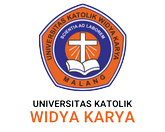Please use this identifier to cite or link to this item:
https://repository.ukwk.ac.id/handle/123456789/159Full metadata record
| DC Field | Value | Language |
|---|---|---|
| dc.contributor.author | Redationo, Nereus Tugur | - |
| dc.contributor.author | Soenoko, Rudy | - |
| dc.contributor.author | Santjoyo, Dionysius Joseph Herry | - |
| dc.contributor.author | Irawan, Yudy Surya | - |
| dc.date.accessioned | 2019-06-22T02:39:22Z | - |
| dc.date.available | 2019-06-22T02:39:22Z | - |
| dc.date.issued | 2014-02 | - |
| dc.identifier.issn | 1991-8178 | - |
| dc.identifier.uri | http://repository.ukwk.ac.id/handle/123456789/159 | - |
| dc.description.abstract | The development of plasma technology is growing rapidly, so that the plasma formation process can be run quickly. Plasma controlling can easily be done, thus simplify determining the desired plasma species. Oxygen plasma is one of the high reactive ions in oxygen plasma. Oxygen ion reactivity can be used as an ion bombardment on the substrate. Oxygen ions reactivity can be used for DLC coating bombardment to remove or create a micro pattern. Besides that on the process of bombardment, both oxygen and DLC (carbon) can bind or remove DLC much quicker. A high-density plasma generation has been developed in the plasma formation. The use of dipole electrode and an automatic settings on the RF, DC bias and gas pressure, resulted a better plasma control. This machine has a characteristic with a radio frequency (RF) working around 2 MHz. This RF plasma is directly controlled by a voltage regulator from 60 V to 250V. DC bias is also controllable from 0 V to 600 V. The pressure could be varied from 10 Pa to 100 Pa with an automatic gas flow rate control. In this study, the RF voltage was varied from 200V to 250 V, while the DCbias was varied in a range of - 400V to 600 V and the gas pressure variation was taken between 20 Pa to 40 Pa. The base pressure was below 0.1 Pa. The first sample used is a SKD 11 DLC coated with a thickness of 5 µm. These samples are used to test the plasma ashing process. The second sample used is a Si wafers coated with a 5µm DLC and implementing the masking oxide polymer. The second sample is used to test the plasma etching. From the research, it is found that the use of oxygen plasma is very effective for ashing or etching process with a plasma parameter control. The suitable etching rate for ashing is about 5.2 nm / s. The etching rate is 5.2 nm / s and the gas pressure is 20 Pa. The RF voltage is 250 V and the DC bias voltage is 600V. The etching rate of 1.67 nm / s is suitable for plasma etching process to produce anisotropic shape. This condition occurs at a gas pressure of 40 Pa, a RF voltage of 250 V and a DC bias voltage of - 450 V. The plasma parameters control is very important, especially controlling the plasma species for a suitable ashing or etching process. The plasma controlling would affect the oxygen ion bombardment reactivity of the DLC layer. | en_US |
| dc.language.iso | en_US | en_US |
| dc.publisher | Australian Journal of Basic and Applied Sciences | en_US |
| dc.subject | Oxygen Plasma | en_US |
| dc.subject | Plasma Ashing | en_US |
| dc.subject | Plasma Etching | en_US |
| dc.subject | Etching Rate | en_US |
| dc.title | Utilization of Oxygen Plasma For Plasma Ashing and Etching Process | en_US |
| dc.type | Article | en_US |
| Appears in Collections: | Jurnal Internasional | |
Files in This Item:
| File | Description | Size | Format | |
|---|---|---|---|---|
| III.A.3.a Cover Jurnal australia science.pdf | 1.41 MB | Adobe PDF | View/Open |
Items in DSpace are protected by copyright, with all rights reserved, unless otherwise indicated.
